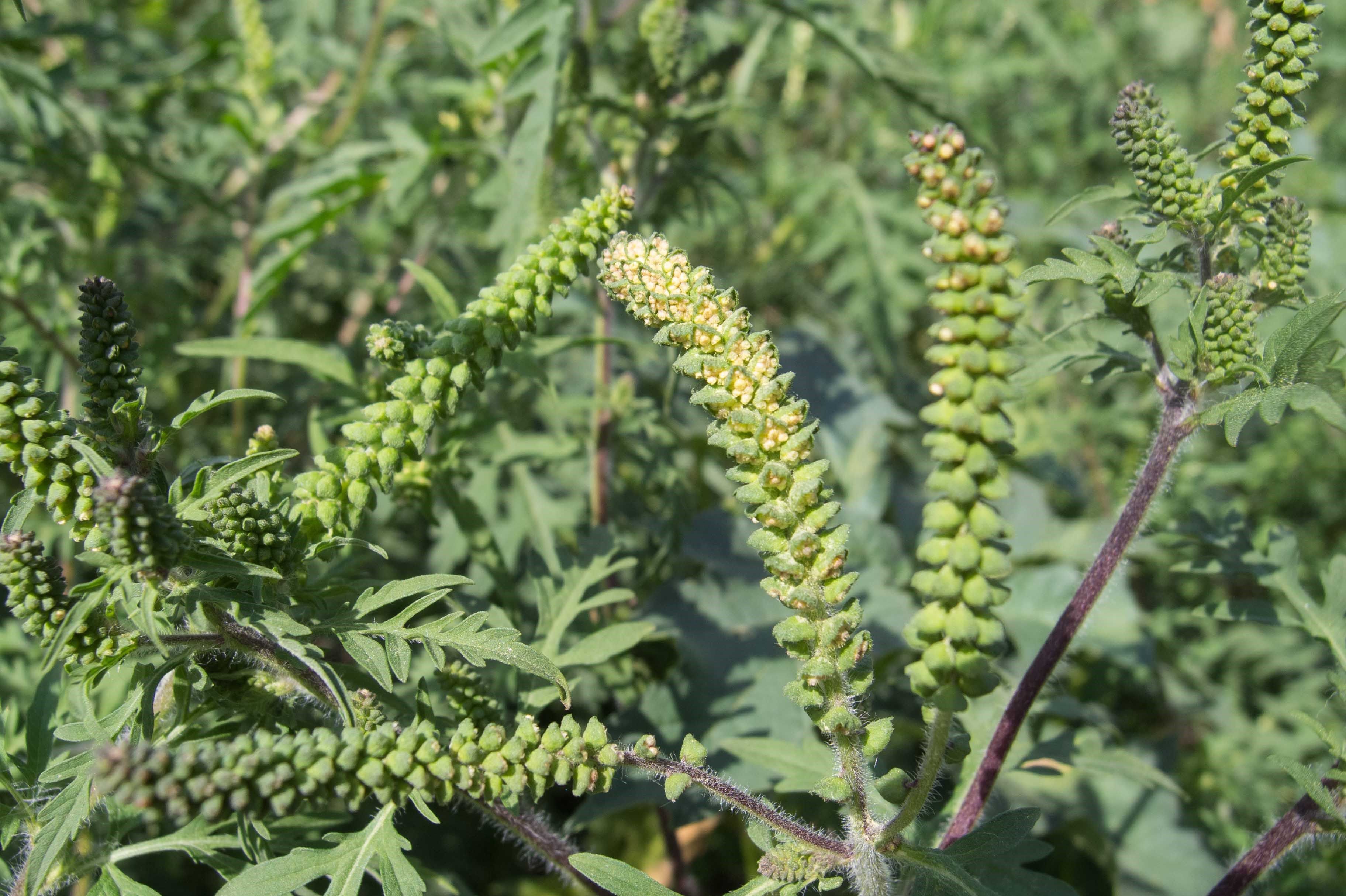
(Vienna, 25 July 2019) Around 10% of the Austrian population suffer from an allergy to ragweed pollen. Ragweed is regarded as the strongest allergen and can cause serious complications such as anaphylactic shock, the most severe form of allergic reaction, or severe swelling of the extremities in those who are sensitive to it. MedUni Vienna's Pollen Monitoring Service has now developed the first Ragweed Finder App and launched it online. This can be regarded as an "action plan" against ragweed for the whole of Austria, not only helping allergy sufferers but also research, agriculture/industry and society in general.
"We must acknowledge that ragweed is a general problem," say Uwe E. Berger und Katharina Bastl from the Austrian Pollen Monitoring service at MedUni Vienna's Department of Ear, Nose and Throat Diseases. The app will not only help sufferers to better survive the ragweed pollen season, which is now starting in August, and avoid contamination, but will also help in the development of treatments and the management of the plants in agriculture and in the private sphere – for example, so that more and more people will be able to identify ragweed and report it.
It helps to mow down the plants promptly
An action plan has been drawn up in collaboration with all the regional governments to enable flowering ragweed plants or young ambrosia or bursage plants - as ragweed is also known – to be mown down promptly and destroyed. Berger explains: "As soon as someone reports a field of ragweed or even isolated plants, the plants will be cut down as quickly as possible." If plants have been cut down at the right time, they do not come back again that season and do not flower – it is not until the following year that the so-called annual plants will become a problem again. Ragweed proliferates in places impacted by human activity, such as roadsides, gravel pits, landfill sites, building sites and farmland.
The app should help people to identify and reduce ragweed, locate hotspots and report symptoms to other people. Says Berger: "The more data we have, the better." The application was developed from the MedUni Vienna Pollen Monitoring Service's existing Ragweed Finder and has been primed with hundreds of data. This data will also be helpful for research purposes.
MedUni Vienna is also a leader and innovator in this area. The research group led by Sabine Flicker at the Institute of Pathophysiology and Allergy Research has set itself the goal of developing a passive treatment for pollen allergies, including allergy to ragweed pollen. To this end, they are running a joint project with Sergei Tillib from the Russian Academy of Sciences, in which camels are immunised with pollen allergens so that antibodies can be harvested from the camels' blood and then administered in the form of nasal sprays or eyedrops as a local treatment for the specific pollen allergy symptoms.
About ragweed and the number of sufferers in Austria
In Austria, ragweed primarily flowers between August and September. However, since it is so widespread in the neighbouring countries to the east, the long-range transport of ragweed pollen plays a major role and relevant pollen concentrations can sometimes be measured right through into October. Ragweed was originally native to North America and was introduced into Europe, Asia and Australia. The plants also impede agriculture and compromise crops – ambrosia is particularly prevalent in sunflower fields.
It is also advisable to eliminate ragweed from private gardens. However, the experts stress, this should only be done by people who are not allergic to the plants (and with precautionary measures such as wearing gloves). And another tip: ragweed should not be composted but the plants that have been cut down or pulled up should be placed in a plastic sack and disposed of with the hazardous waste, in order to avoid any further propagation.
Ragweed allergy sufferers by Austrian State
"We are assuming that there is a decrease in sensitisation rates from the badly affected regions in south-east Austria to the less affected regions towards the west of Austria," explains Katharina Bastl. Based on population figures (as at 1 January 2019) the estimates made by the Pollen Monitoring Service are therefore as follows:
Vienna: 31,309
Lower Austria: 27,679
Styria: 20,510
Upper Austria: 13,339
Carinthia: 9,255
Burgenland: 4,842
Tyrol: 3,396
Salzburg: 2,498
Vorarlberg: 1,774
This gives a total of around 100,000 sufferers (including a figure for unreported cases) in Eastern Austria alone. Says Bastl: "This highlights the size of the ragweed problem. Estimated costs for untreated ragweed pollen allergy sufferers in Austria amount to €275 million a year."
Service: MedUni Vienna Pollen Monitoring Service's Ragweed Finder App